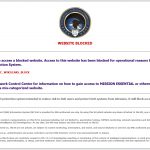
U.S. Cyber Command (CYBERCOM) has blocked access to the Public Intelligence website (publicintelligence.net) as well as at least 2,484 other “WIKILEAKS-related websites” on their unclassified network.
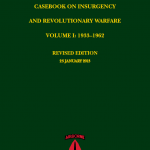
The Assessing Revolutionary and Insurgent Strategies (ARIS) series consists of a set of case studies and research conducted for the US Army Special Operations Command by the National Security Analysis Department of The Johns Hopkins University Applied Physics Laboratory. The purpose of the ARIS series is to produce a collection of academically rigorous yet operationally relevant research materials to develop and illustrate a common understanding of insurgency and revolution. This research, intended to form a bedrock body of knowledge for members of the Special Forces, will allow users to distill vast amounts of material from a wide array of campaigns and extract relevant lessons, thereby enabling the development of future doctrine, professional education, and training.

FM 3-18 is the principal manual for Special Forces (SF) doctrine. It describes SF roles, missions, capabilities, organization, mission command, employment, and sustainment operations across the range of military operations. This manual is a continuation of the doctrine established in the JP 3-05 series, ADP 3-05, ADRP 3-05, and FM 3-05.
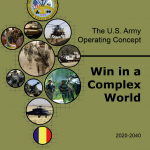
TRADOC Pamphlet 525-3-1 describes how future Army forces, as part of joint, interorganizational, and multinational efforts, operate to accomplish campaign objectives and protect U.S. national interests. It describes the Army’s contribution to globally integrated operations, and addresses the need for Army forces to provide foundational capabilities for the Joint Force and to project power onto land and from land across the air, maritime, space, and cyberspace domains. The Army Operating Concept guides future force development through the identification of first order capabilities that the Army must possess to accomplish missions in support of policy goals and objectives.
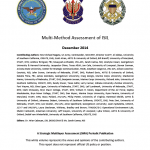
Early in 2014, as it became clear that the rise of the so-called “Islamic State” was becoming a significant menace to Regional Stability and US Interests, SOCCENT began a dialogue with Dr. Hriar Cabayan and his co-workers regarding a topic that has been at the core of the struggle against Violent Extremism. That question has been, and remains today, a perplexing one for those of us from Western cultures and societies: “What precisely are we contesting, and what is it that fuels the adversary’s power?” The contents of this paper reflect some of the work that Dr. Cabayan and his colleagues are doing to help us understand and comprehend this “intangible power” across a unique enterprise of academicians, scientists, policy intellectuals, current and former Foreign Service, military, and intelligence professionals. Most importantly, their efforts to improve our comprehension will enable us to adjust our efforts, our operations, our investments, and our risk-‐calculations to more effectively contest it and the organization that wields it. I am grateful for their tireless work in this regard, and I commend it to the reader.
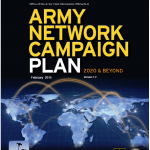
The world is evolving into an increasingly interconnected environment. The Army of 2020 will operate in a complex world where cloud-based computers receive data from tens of billions of devices. These computers will have the capacity to digest, correlate, contextualize, process and then present data back to humans in a way that assists our decision-making process. The Army is modernizing its network to prepare for the impending data-driven, cloud-based world, as depicted in Figure 1. While legacy networking architectures stored and protected data locally, cloud-based architectures will store and protect data in a centralized yet distributed repository that enables global access. The Army Network Campaign Plan outlines current efforts that posture the Army for success in a cloud-based world.
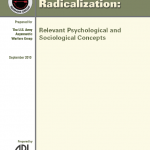
Radicalization is the process by which an individual, group, or mass of people undergo a transformation from participating in the political process via legal means to the use or support of violence for political purposes (radicalism). Radicalism includes specific forms, such as terrorism, which is violence against the innocent bystander, or insurgency, which is violence against the state. It does not include legal and/or nonviolent political protest, such as protest that is more properly called activism.
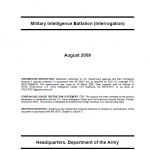
TC 2-22.304 provides doctrinal guidance concerning the military intelligence (MI) battalion (interrogation). The TC complements existing doctrine, in particular FM 2-22.3, and incorporates lessons learned from recent operations. The MI battalion (interrogation) is specifically designed to operate within a joint interrogation and debriefing center (JIDC). The battalion command, staff, personnel, and equipment form the nucleus of the JIDC. The battalion is task-organized and augmented with additional personnel from other Services, Government civilians, and civilian contractors to form a JIDC.
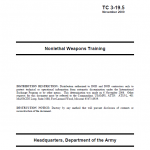
TC 3-19.5 provides guidance on specific NLW training with emphasis on User Training, Train-the-Trainer Training, and Unit Training. It is designed to be used with FM 3-22.40, Multi-Service TTP for the Tactical Employment of Nonlethal Weapons, and the Multi-Media Training Support Package (MMTSP). The MMTSP is a Warrior TSP designed to train individual tasks.
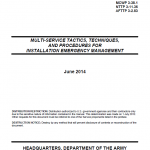
Multi-Service Tactics, Techniques, and Procedures for Installation Emergency represents a significant renaming and revision to the November 2007 publication Multiservice Tactics, Techniques, and Procedures for Installation CBRN Defense. It expands the scope from chemical, biological, radiological, and nuclear (CBRN) defense to all-hazards installation emergency management (IEM), including the management of CBRN events. This publication defines the roles of Department of Defense (DOD) installation commanders and staffs and provides the tactics, techniques, and procedures (TTP) associated with installation planning and preparedness for response to, and recovery from, hazards to save lives, protect property, and sustain mission readiness. The purpose of this publication is to summarize existing policies, responsibilities, and procedures for IEM programs at DOD installations worldwide for all hazards, as defined by DODI 6055.17, and to translate this policy into tactical terms applicable to military installation commanders.

The FBI Cyber Division has issued a notification to private industry and law enforcement to be aware of the potential for retaliatory cyber attacks following recent U.S. military actions in the Middle East. While the FBI has “no information at this time to indicate specific cyber threats to US networks or infrastructure in response to ongoing US military air strikes against the terrorist group known as the Islamic State of Iraq and the Levant (ISIL)” the bulletin states that the FBI believes that “extremist hackers and hacktivist groups, including but not limited to those aligned with the ISIL ideology, will continue to threaten and may attempt offensive cyber actions against the United States in response to perceived or actual US military operations in Iraq or Syria.”
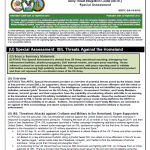
This ARTIC Special Assessment provides an overview of potential threats posed by the Islamic State of Iraq and the Levant (ISIL), its supporters, those swayed by radical Islam, and lone offenders with the intent or inclination to act on ISIL’s behalf. Presently, the Intelligence Community has not identified any corroborative or definitive extremist plots focused on the US Army, its Soldiers, Government Civilians, and Family Members. However, terrorist groups and their supporters have the capability of conducting attacks with little to no warning in the Homeland and against US military installations and facilities worldwide. Given the continued rhetoric being issued by ISIL’s media services and supporters through various social media platforms the ARTIC is concerned of the possibility of an attack. Soldiers, Government Civilians and Family Members are reminded to be vigilant of their surroundings and report suspicious activities to their respective military or local law enforcement.

“First time I ever saw an Afghan Police Station I thought it was something straight out of the dark ages, complete with zero electricity, mud structure, and no sewage drainage. Immediately I knew this mission would be challenging and wondered what the heck I got myself into?” This quote from a U.S. Army Captain is just one example of the unusually blunt assessments contained in the Joint Center for International Security Force Assistance (JCISFA) guide for advising the Afghan National Police (ANP). The 2010 version of the JCISFA ANP Mentor Guide, which was obtained by Public Intelligence along with a guide for troops assisting the Afghan National Army (ANA), contains a number of revealing observations on the often poor condition of Afghan National Security Forces, in particular the ANP.
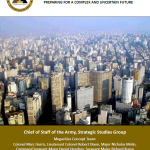
Cities with populations of ten million or more are given a special designation: megacity. There are currently over twenty megacities in the world, and by 2025 there will be close to forty. The trends are clear. Megacities are growing, they are be-coming more connected, and the ability of host nation governments to effectively deal with their explosive growth and maintain security is, in many cases, diminishing. Megacities are a unique environment that the U.S. Army does not fully understand.
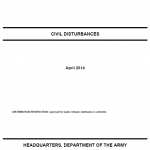
ATP 3-39.33 provides discussion and techniques about civil disturbances and crowd control operations that occur in the continental United States (CONUS) and outside the continental United States (OCONUS). United States (U.S.) forces deploy in support of unified action, overseas contingency operations, and humanitarian assistance worldwide. During these operations, U.S. forces are often faced with unruly and violent crowds who have the intent of disrupting peace and the ability of U.S. forces to maintain peace. Worldwide instability coupled with U.S. military participation in unified-action, peacekeeping, and related operations require that U.S. forces have access to the most current doctrine and techniques that are necessary to quell riots and restore public order.
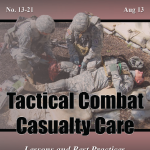
Tactical Combat Casualty Care (TCCC) is the pre-hospital care rendered to a casualty in a tactical, combat environment. The principles of TCCC are fundamentally different from those of traditional civilian trauma care, which is practiced by most medical providers and medics. These differences are based on both the unique patterns and types of wounds that are suffered in combat and the tactical environment medical personnel face in combat. Unique combat wounds and tactical environments make it difficult to determine which intervention to perform at what time. Besides addressing a casualty’s medical condition, responding medical personnel must also address the tactical situation faced while providing casualty care in combat. A medically correct intervention performed at the wrong time may lead to further casualties. Stated another way, “good medicine may be bad tactics,” which can get the rescuer and casualty killed. To successfully navigate these issues, medical providers must have skills and training focused on combat trauma care, as opposed to civilian trauma care.
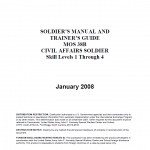
This manual provides the information necessary for Civil Affairs (CA) Soldiers to train for military occupational specialty (MOS) proficiency and includes self-development information that can assist the Soldier in lifelong learning and career development. An overview of the Army training process details the linkage and importance of the various elements that comprise the Army training process.
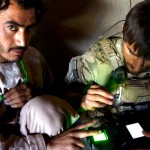
For years the U.S. military has been waging a biometric war in Afghanistan, working to unravel the insurgent networks operating throughout the country by collecting the personal identifiers of large portions of the population. A restricted U.S. Army guide on the use of biometrics in Afghanistan obtained by Public Intelligence provides an inside look at this ongoing battle to identify the Afghan people.
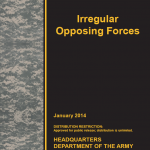
Irregular forces are armed individuals or groups who are not members of the regular armed forces, police, or other internal security forces (JP 3-24). The distinction of being armed as an individual or group can include a wide range of people who can be categorized correctly or incorrectly as irregular forces. Excluding members of regular armed forces, police, or internal security forces from being considered irregular forces may appear to add some clarity. However, such exclusion is inappropriate when a soldier of a regular armed force, policeman, or internal security force member is concurrently operating in support of insurgent, guerrilla, or criminal activities.
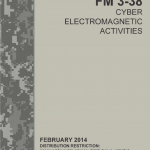
FM 3-38, Cyber Electromagnetic Activities, provides overarching doctrinal guidance and direction for conducting cyber electromagnetic activities (CEMA). This manual describes the importance of cyberspace and the electromagnetic spectrum (EMS) to Army forces and provides the tactics and procedures commanders and staffs use in planning, integrating, and synchronizing CEMA. This manual provides the information necessary for Army forces to conduct CEMA that enable them to shape their operational environment and conduct unified land operations. It provides enough guidance for commanders and their staffs to develop innovative approaches to seize, retain, and exploit advantages throughout an operational environment. CEMA enable the Army to achieve desired effects in support of the commander’s objectives and intent.
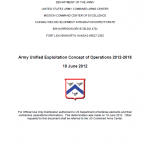
This CONOPS describes an overarching concept of operations for the 2012-2018 timeframe that provides a framework for “Unified Exploitation (UE)” operations and the basis to develop supporting capabilities. It establishes linkages to other Army concepts and describes how UE enables decisive action in support of unified land operations. This CONOPS describes the operational context and how commanders integrate supporting UE capabilities through Mission Command to produce an operational advantage. This CONOPS addresses the central military problem: the Army lacks a systematic approach to effectively integrate multiple organizations, disciplines, functions, and processes that support exploitation through their application of tactical, technical, and scientific capabilities. The absence of an organized exploitation framework to develop facts, actionable information or intelligence from collected enemy information, materials, or people, results in a knowledge void. This lack of knowledge may compromise our ability to execute commander directed, follow-on actions and represents tactical and perhaps even strategic opportunities lost.